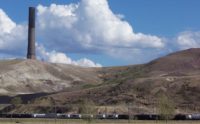The Department of Energy plans to invest up to $6 million in an engineered geothermal demonstration project in Geysers Geothermal Field in Lake County, Calif. The project has been controversial because of concerns that the rock-drilling involved would trigger earthquakes.
The project’s developer, AltaRock Energy Inc., would create a fractured reservoir by drilling an injection well into 500 F felsite rock at depths of up to 12,500 ft and then circulating water through it to harvest steam to run a turbine. The cooled water would then be returned to the hot rock. Electricity generated by the steam will be sold to Northern California Power Agency.
Geothermal systems have been acclaimed as a potential huge source of renewable energy. A 2007 Massachusetts Institute of Technology study estimated that engineered geothermal could supply up to 10% of the country’s electricity needs within 50 years at prices competitive with fossil-fuel fired generation.
The engineered fissures are created by using a hydraulic pressure of up to 4,000 psi to “hydroshear” existing fractures, causing them to open slightly and slip. This shear dilation results in a network of small, interconnected fractures that act as underground heat exchangers. The process takes seven days per zone for a total of 21 days for the three wells.
The company’s initial timeline called for well stimulation to begin at the end of August, but AltaRock representative Kim Van Hall says the schedule had “slipped a bit.”
The key government agency ruled that the worries about earthquakes triggered by the rock fractures were overblown. The U.S. Dept. of the Interior’s Bureau of Land Management in June returned a finding of no significant impact. “The process will induce seismicity that is fully expected to be within the range of present levels (both frequency and magnitude) experienced at Anderson Springs [the closest community to the site],” the report said.
The Environmental Assessment and Initial Study showed that during the hydroshearing process, four microseismic events could be produced with a magnitude greater than 0.7. The maximum magnitude of the microseismic event was predicted to be 2.3.
To mitigate any impact, AltaRock Energy, which is based in Sausalito, proposed installing an eight-station microseismic sensor array to monitor seismic activity with a three-dimensional view of any rock movement. Hydroshear activity will be modified if ground motion is in excess of 3.9%of gravity and stop if in excess of 9.2%. The company has also designed the project to operate a least a mile from the identified Big Sulfur Creek Fault Zone.


Post a comment to this article
Report Abusive Comment